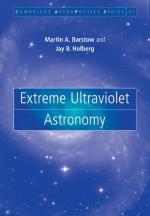|
This section contains 537 words (approx. 2 pages at 300 words per page) |

|
Optical telescopes use mirrors and lenses to gather light for magnification. They have been in use for nearly 400 years. But visible light is a small part of the overall spectrum of electromagnetic waves. Beyond the violet portion of visible light are high-energy ultraviolet rays, X-rays and cosmic rays. Each wavelength gives a different "picture" of the sky. Very hot stars produce more energy in the ultraviolet wavelengths than in visible light. Consequently, what astronomers see is just a small part of the star's total energy output. To get a better understanding of the nature of celestial objects, observations in other wavelengths than the visual are necessary.
The ozone layer of the earth's atmosphere absorbs high-energy radiation; the only way to detect ultraviolet radiation is by satellite. The first opportunity to do so presented itself following World War II. Herbert Friedman (1916-) launched several captured German V-...
|
This section contains 537 words (approx. 2 pages at 300 words per page) |

|


